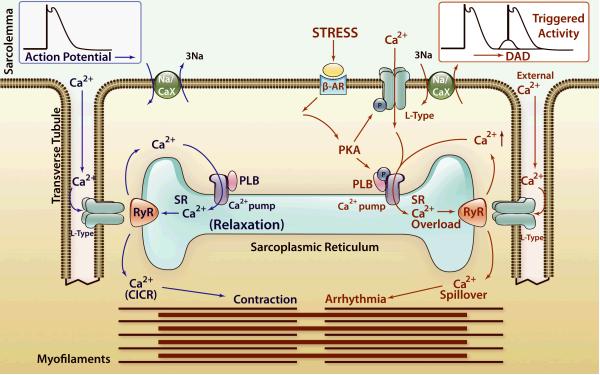
Figure 1.
Ca2+-induced Ca2+ release (CICR), store overload-induced Ca2+ release (SOICR), and triggered arrhythmia.
The left part of the diagram (in blue) depicts the mechanism of CICR, in which an action potential activates the voltage-dependent L-type Ca2+ channel, leading to a small Ca2+ influx. This Ca2+ entry opens the RyR2 channel in the sarcoplasmic reticulum (SR), resulting in SR Ca2+ release and muscle contraction. The right part of the diagram (in red) denotes the mechanism of SOICR, in which spontaneous SR Ca2+ release or Ca2+ spillover occurs under conditions of SR Ca2+ overload caused, for example, by stress via the β-adrenergic receptor (b-AR)/protein kinase A (PKA)/phospholamban (PLB) signaling pathway. SOICR can activate the Na+/Ca2+ exchanger (Na/CaX), which, in turn, can lead to delayed afterdepolarizations (DADs) and triggered activities. Reprinted from Priori and Chen15 with permission.